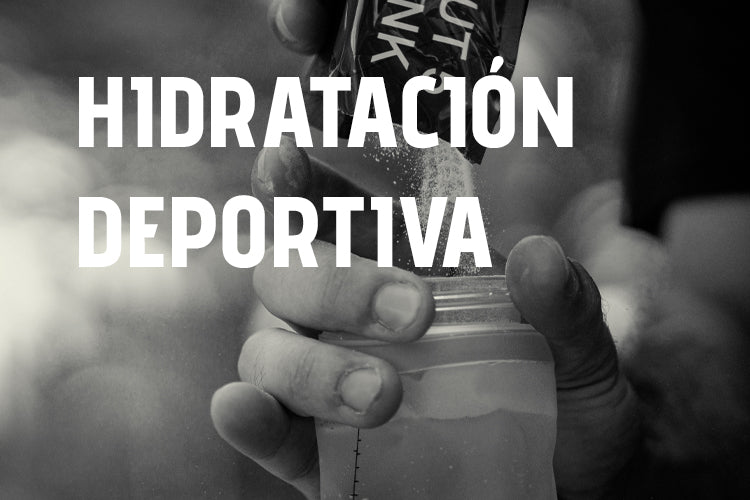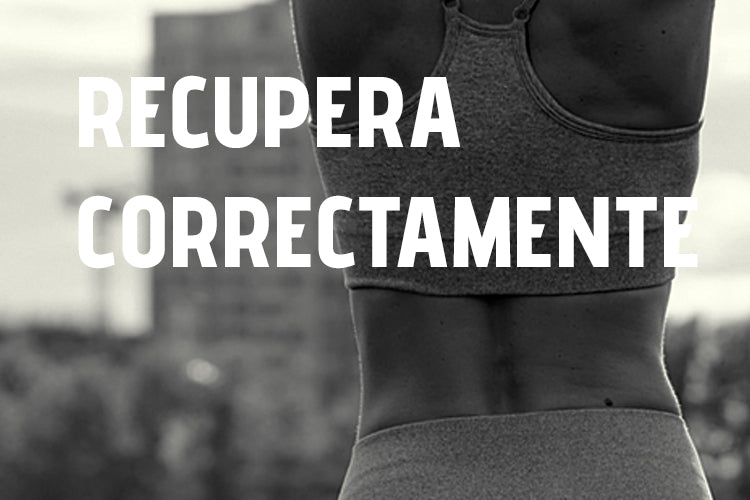As we have discussed previously in other guides , nutritional periodization is key when it comes to getting the most out of the athlete. Another way to train low (soft) would be to eliminate carbohydrates from the diet and have a long-term, low-carb, high-fat diet. In the 1920s it was shown that reducing carbohydrate intake and increasing fat intake will result in higher rates of fat oxidation (1) . However, it was also observed that subjects felt more fatigued (1) and exercise capacity was reduced with this practice (2) Burke and colleagues (3 , 4 , 5) conducted a series of short-term, low-carb, high-fat diet studies and one of their observations was that 5 days on a low-carb, high-fat diet already showed some adaptations to that diet that could not be fully reversed by replenishing muscle glycogen stores. Enzymes involved in fat oxidation were increased and fat oxidation increased (3) . In neither study, however, were enhanced effects on performance observed (4,5). When athletes trained for a longer period (7 weeks) on a high-fat (62% fat, 21% carbohydrate) or high-carbohydrate (20% fat, 65% carbohydrate) diet, both groups were found to improve with training, but the training effects were more profound in the high-carbohydrate group.
There is one study that is always cited as evidence of the benefits of a ketogenic diet. In the 1980s, a study with five subjects showed that a ketogenic diet, containing less than 20 g of carbohydrates per day, over an extended period (4 weeks) resulted in hyperketonemia and increases in fat oxidation (6) . In this study, exercise capacity was only tested at low intensity and showed a high degree of variation both between and within subjects. On average, there was no difference in exercise capacity before and after the ketogenic diet. As expected, fat oxidation was increased and some adaptations in muscle occurred.
A study by Stellingwerff et al. (7) showed that although a high-fat diet increases fat oxidation, perhaps by increasing enzyme activities related to fat metabolism, it may reduce enzyme activities related to carbohydrate metabolism. Thus, while many studies observed improvements in HAD, for example, Stellingwerff et al. (7) demonstrated compromised pyruvate dehydrogenase activity. Thus, it may be that fat oxidation increases, at least in part, as a result of an inability to utilize carbohydrates. Because carbohydrates are important substrates for high-intensity exercise, such adaptations would be undesirable. Indeed, a carefully controlled study by Burke et al. (8) showed no benefit to a ketogenic diet versus a high-carbohydrate diet, or a mixed approach (more or less carbohydrate depending on training) in elite endurance athletes.
In fact, high-intensity exercise performance did not improve with 3 weeks of intense training in the ketogenic diet group (−1.6%), whereas athletes consuming the other diets achieved substantial improvements in performance (6.6% in the high-carbohydrate group and 5.5% in the mixed group).
The ketogenic diet has received considerable attention in the popular press, and many claims have been made recently. However, it is important to realize that, to date, no studies have demonstrated the performance benefits of a ketogenic diet, including the often-referenced initial study (6). Therefore, at present, there is no data on ketogenic diets in athletes on which to base performance claims.
IS THE USE OF CARBOHYDRATES IMPORTANT DURING SPORTS?
Bergman and colleagues (9 , 10) trained nine amateur and professional male subjects for 9 weeks during 1 h of cycling at two exercise intensities before (45 and 65% of VO 2max ). They demonstrated that both amateur and professional athletes had carbohydrates as their main oxidation substrate and not fats.
In 2000, a comprehensive review of the available literature on athletes' dietary practices was undertaken to address some of the challenges surrounding self-selected CHO intakes (11). Male endurance athletes typically consumed daily CHO intakes of 5–7 g/kg/day for general training needs, with some evidence that this was a higher intake than observed among athletes in previous studies (11). Some research related to competitive nutrition, periods of increased training, or elite athletes such as Kenyan distance runners (12) or Tour de France cyclists (13) has reported higher intakes of 7–12 g CHO/kg/day for specific periods. These CHO intakes, and the concomitant moderate fat intakes, are in line with sports nutrition guidelines of the relevant era (14). It should be noted that, unlike male endurance athletes, some women are less likely to achieve the recommended intake guidelines for CHO, primarily due to their lower relative energy intake (11). Despite potential limitations of dietary survey techniques in assessing the adequacy of athletes' dietary practices (i.e., potential errors caused by underreporting or insufficient eating during the survey period), the available data clearly demonstrate that endurance athletes from the 1990s to 2005 consumed high CHO, low-fat diets.
Official dietary guidelines for athletes have evolved over the past few decades to better define goals and objectives for optimal CHO intake during training and competition. Such guidelines now promote the goal of “high CHO availability” (CHO intake intended to meet specific training/competition substrate needs) rather than absolute (daily) CHO intake per se. Furthermore, such a goal is aligned with training sessions or events when optimal performance is required, and there is a tacit recognition that higher CHO intakes or high CHO availability may not be needed during other sessions (15 , 16). Indeed, there are evolving dietary periodization practices where some sessions are deliberately conducted with low CHO availability to promote training adaptations. However, it should be emphasized that these strategies are implemented acutely, are periodized to constitute a small proportion of the training program, are avoided when high quality/intensity training results are required, and are not typically achieved through the intake of a high-fat diet (17 , 18) , such as those explained above in the carbohydrate periodization guide.
The overriding philosophy of undertaking quality training and competition with high CHO availability is retained, to promote training adaptations and the use of CHO as a substrate for the brain and central nervous system while performing optimally (16). While no data are available on how highly trained competitive endurance athletes implement such practices, evidence supports the idea that these athletes freely select CHO-rich or CHO-periodized diets instead of high-fat diets. Such a strategy is essential to maintain muscular energy stores and meet the daily demands of strenuous endurance training sessions.
THE EVIDENCE GIVES THEM AWAY
There are numerous studies that demonstrate to the ketogenic community that using fats is much better than consuming carbohydrates.
One of the studies known for its use in defending the use of the ketogenic diet in sports performance is by Mc Kenzie and colleagues (19 , 20), in this study they evaluated the changes in muscle glycogen (MG) and triglyceride (MT) concentrations in aerobically conditioned sled dogs during prolonged exercise. With the following conclusion (read carefully and tell us later what they have in common); in the present study, significantly more triglycerides (fats) were used during the first 140 km run, compared to the amount used during the last 140 km, suggesting that extramuscular substrates likely play an important role in supporting muscular work in sled dogs that are undergoing repeated bouts of prolonged exercise. The results of another study of dogs subjected to prolonged submaximal exercise indicated that plasma free fatty acids are the predominant energy substrate used in lower intensity exercise in this species.
An 18-week study of human cyclists consuming a high-fat diet revealed an increased capacity for fat metabolism and a four-fold decrease in fat utilization during exercise, compared to cyclists consuming a standard diet; these changes did not negatively impact performance. Furthermore, consuming a high-fat diet had a synergistic effect on conditioning in rats, resulting in increased submaximal running endurance.
As you will see, the common factor is the use of statements about animals, rats, dogs, etc. In addition, they are cross-sectional studies, which is observational, so not much data is taken from their daily lives and only post-diet data (without checking whether they actually follow the required diet).
On the other hand, they claim the use of the ketogenic diet as the great grail of sports nutrition using another very common study (21), where they claim that muscle glycogen can be replenished without the need for carbohydrate intake, only through fats. In this study, horses that followed a high-fat diet resulted in a glycogen replenishment ''similar'' to that of horses fed a high-carbohydrate diet.
As you can see, their common factor is the animal and observational studies that defend the use of fats over the use of carbohydrates.
As you already know, the only way to achieve optimal muscle and liver glycogen replenishment is through the use of post- and intra-workout carbohydrates with a proper combination of simple and complex carbohydrates. Check out all our muscle glycogen guides to learn more, as well as our products based on current scientific evidence.
Literature
- Krogh A, Lindhard J. The relative value of fat and carbohydrate as sources of muscular energy. Biochem J. 1920;14:290–363.
- Christensen EH, Hansen O. Carbohydrate Supplements During and Immediately Post Exercise. Arbeitsfähigkeit und Ernährung. Scand Arch Physiol. 1939;81:160–71.
- Burke LM, Angus DJ, Cox GR, et al. Effect of fat adaptation and carbohydrate restoration on metabolism and performance during prolonged cycling. J Appl Physiol. 2000;89:2413–21.
- Burke LM, Hawley JA, Angus DJ, et al. Adaptations to short-term high-fat diet persist during exercise despite high carbohydrate availability. Med Sci Sports Exerc. 2002;34:83–91.
- Burke LM, Hawley JA. Effects of short-term fat adaptation on metabolism and performance of prolonged exercise. Med Sci Sports Exerc. 2002;34:1492–8.
- Phinney SD, Bistrian BR, Evans WJ, et al. The human metabolic response to chronic ketosis without caloric restriction: preservation of submaximal exercise capability with reduced carbohydrate oxidation. Metabolism. 1983;32:769–76.
- Stellingwerff T, Spriet LL, Watt MJ, et al. Decreased PDH activation and glycogenolysis during exercise following fat adaptation with carbohydrate restoration. Am J Physiol. 2006;290:E380–8.
- Burke LM, Ross ML, Garvican-Lewis LA, et al. Low carbohydrate, high fat diet impairs exercise economy and negates the performance benefit from intensified training in elite race walkers. 2016.
- Bergman BC, Butterfield GE, Wolfel EE, et al. Evaluation of exercise and training on muscle lipid metabolism. Am J Physiol. 1999;276:E106–17.
- 10.Bergman BC, Brooks GA. Respiratory gas-exchange ratios during graded exercise in fed and fasted trained and untrained men. J Appl Physiol. 1999;86:479–87.
- Burke LM, Cox GR, Cummings NK, et al. Guidelines for daily carbohydrate intake: do athletes achieve them? Sports Med. 2001;31:267–99.
- Onywera VO, Kiplamai FK, Boit MK, et al. Food and macronutrient intake of elite Kenyan distance runners. Int J Sport Nutr Exerc Metab. 2004;14:709–19.
- Saris WHM, Van Erp-Baart MA, Brouns F, et al. Study on food intake and energy expenditure during extreme sustained exercise: the Tour de France. Int J of Sports Medicine. 1989;10:S26–31.
- Burke LM, Kiens B, Ivy JL. Carbohydrates and fat for training and recovery. J Sports Sci. 2004;22:15–30.
- Burke L.M. Re-examining high-fat diets for sports performance: did we call the 'nail in the coffin' too soon? Sports Med. 2015;45.
- Burke LM, Hawley JA, Wong SH, et al. Carbohydrates for training and competition. J Sports Sci. 2011;29:S17–27.
- Hansen AK, Fischer CP, Plomgaard P, et al. Skeletal muscle adaptation: training twice every second day vs. training once daily. J Appl Physiol. 2005;98:93–9.
- Yeo WK, Paton CD, Garnham AP, et al. Skeletal muscle adaptation and performance responses to once a day versus twice every second day endurance training regimens. J Appl Physiol. 2008;105:1462–70.
- Erica C. McKenzie, Kenneth W. Hinchcliff, Stephanie J. Valberg, Katherine K. Williamson, Mark E. Payton and Michael S. Davis. Assessment of alterations in triglyceride and glycogen concentrations in muscle tissue of Alaskan sled dogs during repetitive prolonged exercise. Volume 69: Issue 8
- McKenzie, Erica; Holbrook, Todd; Williamson, Kathy; Royer, Christopher; Valberg, Stephanie; Hinchcliff, Ken; jose-cunilleras, eduard; Nelson, Stuart; Willard, Michael; davis, michael. Recovery of Muscle Glycogen Concentrations in Sled Dogs During Prolonged Exercise. Medicine & Science in Sports & Exercise: August 2005 – Volume 37 – Issue 8 – p 1307-1312
- S. HYYPPä,M. SAASTAMOINEN,A. REETA PÖSÖ. Effect of a post exercise fat-supplemented diet on muscle glycogen repletion. June 10, 2010




Leave a comment
This site is protected by hCaptcha and the hCaptcha Privacy Policy and Terms of Service apply.